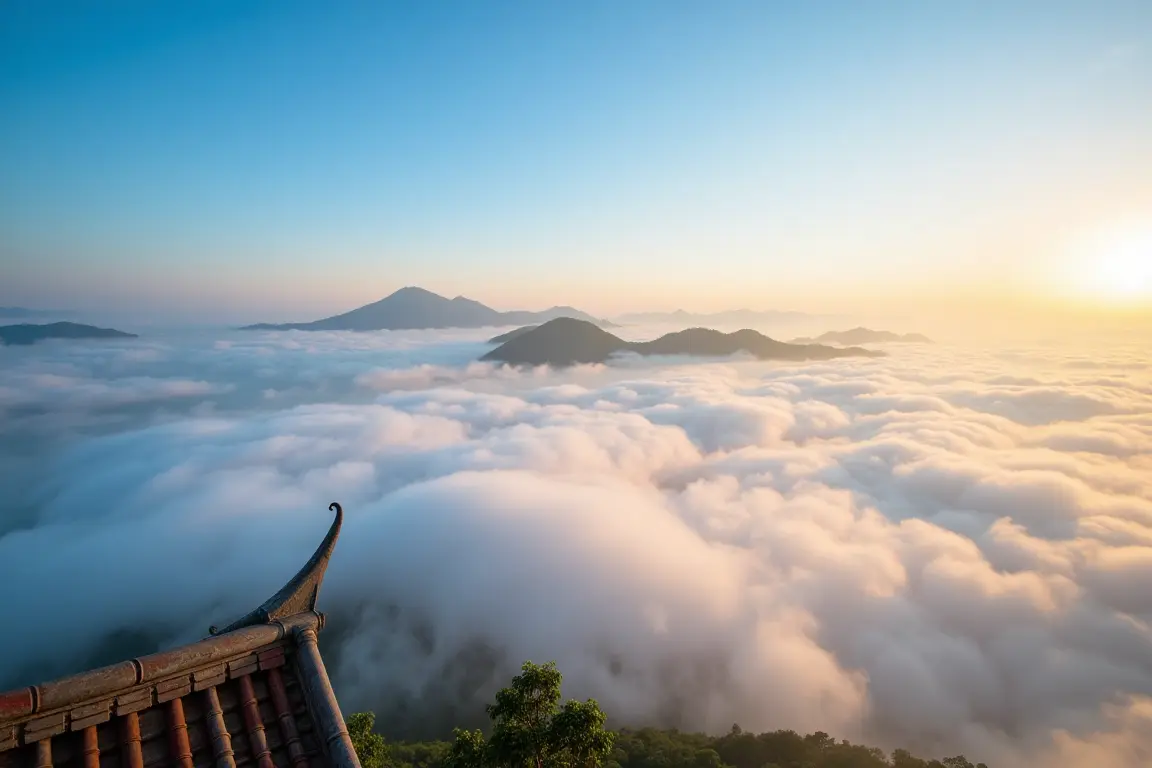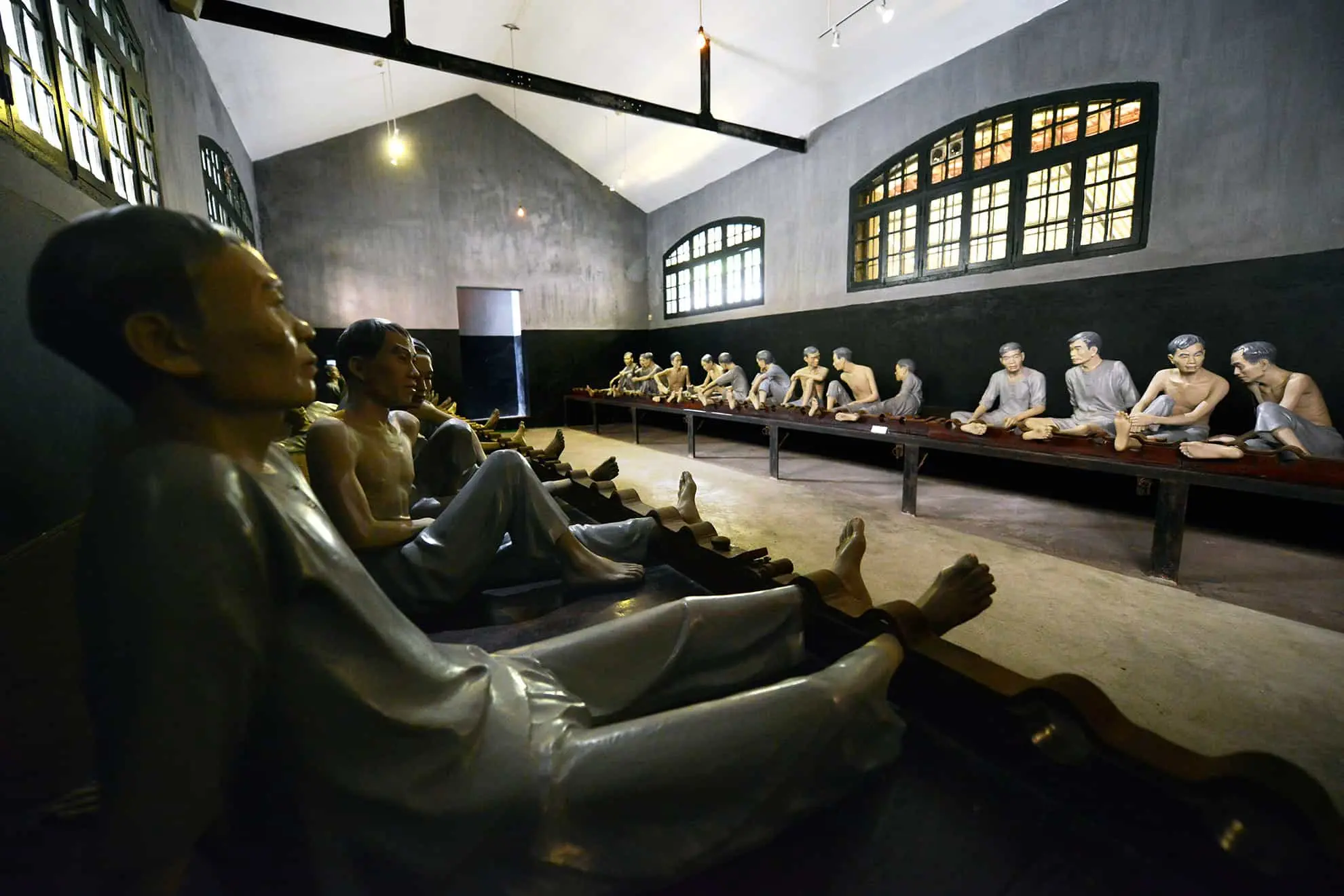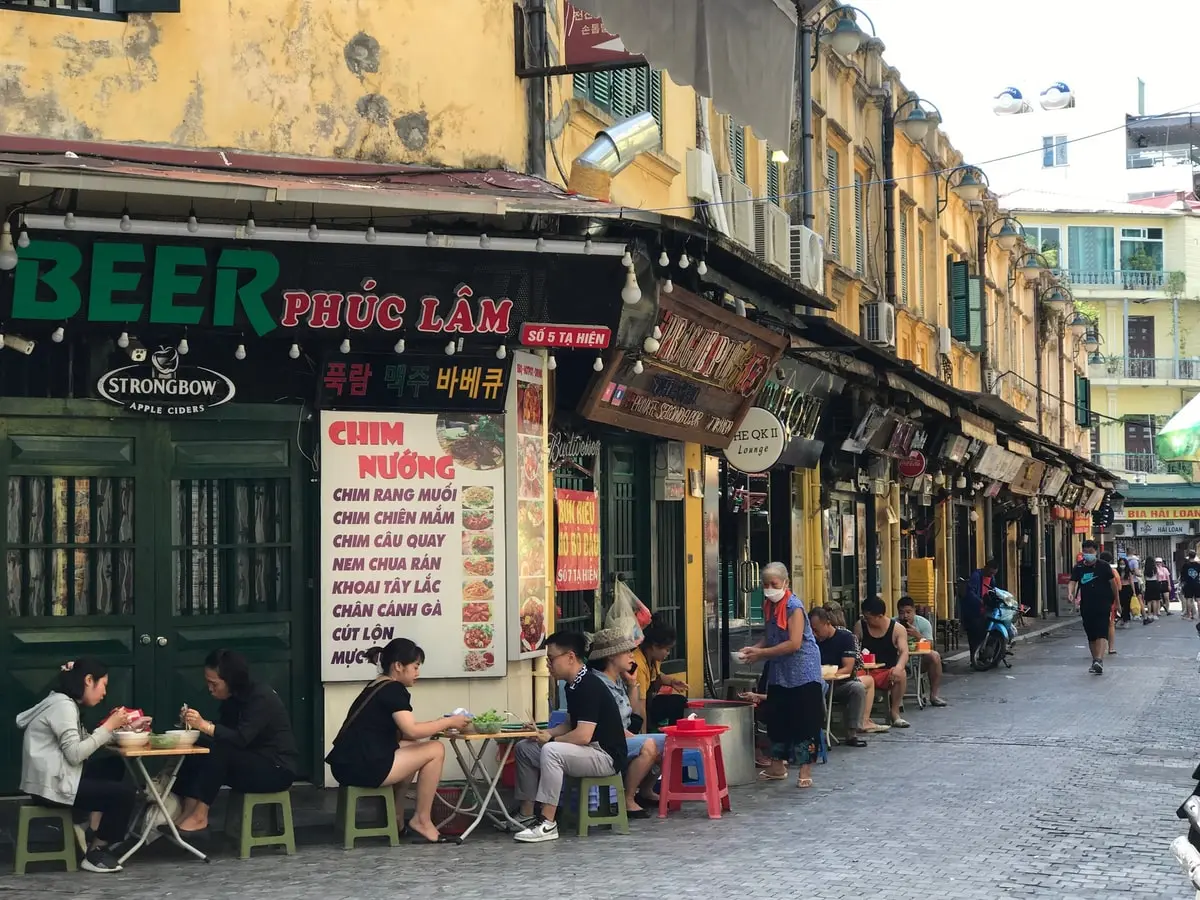Vietnam offers travelers a rich tapestry of experiences. This country in Southeast Asia boasts stunning natural beauty, deep historical significance, and vibrant cultural richness. Planning a trip can feel overwhelming with so many incredible places to visit in Vietnam. EssentialVietNamtravel.com is here to help. This guide provides clear, actionable information on the best Vietnam destinations, helping you choose where to go and plan your journey. We cover everything from iconic Vietnam tourist spots to practical travel tips.
Travelers are seeking information to plan their trip to Vietnam, and this guide aims to be your primary resource. We will explore Vietnam points of interest across the nation, ensuring you have the details needed for an amazing adventure in Asia. Whether you are looking for luxury Vietnam destinations for couples or the best Vietnam destinations for solo female travelers, this guide covers essential Vietname travel insights.
Discover Top Vietnam Tourist Spots: Ha Long Bay, Hanoi, Ho Chi Minh City, Hoi An & More
![]()
When people think of Vietnam destinations, certain iconic images often come to mind. These are the places consistently featured in travel guides and recommended by fellow travelers. Understanding these key locations is the first step in planning your Vietnamese travel adventure. These spots represent the heart of Vietnam’s tourism appeal, offering a mix of natural wonders, historical depth, and cultural vibrancy. Accessibility and infrastructure exist to travel between these major destinations, making them excellent starting points.
Ha Long Bay: Located in northern Vietnam, near the Chinese border, Ha Long Bay is arguably the country’s most famous natural attraction. Its unique emerald waters and thousands of towering limestone karsts and islets create a seascape unlike any other. This spectacular landscape earned Ha Long Bay recognition as a UNESCO World Heritage Site.
The primary way to experience its beauty is through an overnight cruise. Boats navigate through the islands, stopping for activities like kayaking, swimming, and visiting caves. Seeing the sunset and sunrise over the karsts is an unforgettable experience. Ha Long Bay offers a serene escape and is a must-see among Vietnam visiting places.
Hanoi: As the capital city of Vietnam, Hanoi offers a fascinating blend of old and new. It pulses with energy yet retains a strong sense of history. The heart of Hanoi is the Hanoi Old Quarter, a maze of narrow streets, each historically specializing in a particular trade. Exploring this area by foot or cyclo reveals French colonial architecture alongside traditional tube houses and temples. Hanoi is also a center for Vietnamese cuisine; trying a bowl of authentic Pho (noodle soup) here is essential. Key sites include Hoan Kiem Lake, the Temple of Literature, and the Ho Chi Minh Mausoleum Complex. Hanoi provides a deep dive into Vietnamese culture and traditions.
Ho Chi Minh City: Formerly known as Saigon, Ho Chi Minh City is Vietnam’s largest city and its economic hub. Located in the south, it presents a more modern, bustling, and energetic face compared to Hanoi. The pace here is fast, reflected in the endless stream of motorbikes navigating its wide boulevards. Key historical sites include the Reunification Palace and the poignant War Remnants Museum, offering insights into the Vietnam War. French colonial architecture is also evident in structures like the Notre Dame Cathedral and the Central Post Office. HCMC is a gateway to the Mekong Delta and offers vibrant nightlife and shopping. It’s a key point of interest for understanding modern Vietname.
Hoi An: Situated in Central Vietnam, Hoi An offers a completely different atmosphere. Its main draw is the Hoi An Ancient Town, another UNESCO World Heritage Site. This exceptionally well-preserved Southeast Asian trading port dating from the 15th to 19th century feels like stepping back in time.
Cars are banned from the core ancient town during certain hours, making it perfect for walking. Famous for its hundreds of tailor shops offering custom tailoring, Hoi An is also magical at night when colorful lantern-lit streets create a unique, romantic ambiance. Nearby An Bang Beach provides a coastal escape. Hoi An is consistently ranked among the best places to go in Vietnam for atmosphere and charm.
Sapa: For those seeking dramatic mountain scenery and cultural immersion, Sapa in the Northern Highlands is a top choice. This region is famous for its stunning, cascading rice terraces carved into the hillsides. Trekking through these landscapes is the main activity, offering breathtaking views and encounters with local ethnic minorities, primarily the H’mong and Dao people, known for their distinct cultures and colorful traditional clothing. Sapa itself is a market town, but the real experience lies in venturing into the surrounding valleys, perhaps staying in a local homestay. The natural beauty here is exceptional.
These locations form the backbone of many Vietnam travel itineraries, each offering a distinct slice of the country’s appeal. They are popular for good reason and provide a fantastic introduction to the diverse experiences Vietnama offers.
Choosing Your Ideal Vietnam Destination: From Cultural Hubs like Hue to Natural Wonders
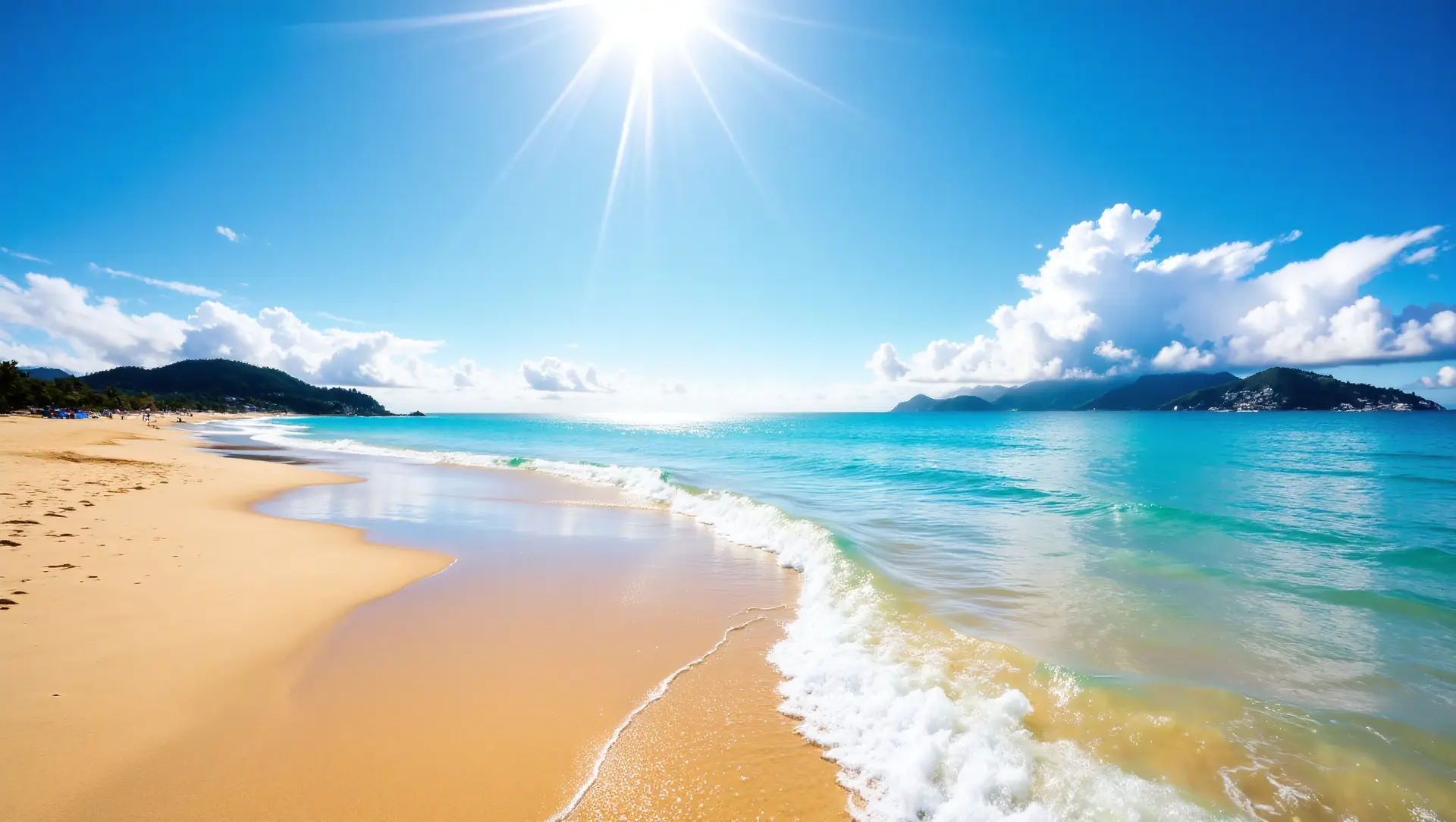
Vietnam’s diversity means there’s a perfect destination for every type of traveler. Your destination choice is determined by your traveler’s interests. Are you drawn to history, beaches, mountains, or city life? Understanding your preferences helps narrow down the vast array of places to see in Vietnam. Beyond the “big five” mentioned above, numerous other regions offer unique experiences. Consider these categories when deciding where to go in Vietnam.
Let’s explore options ranging from coastal retreats to historically rich towns and adventurous mountain landscapes. This section helps compare specific destinations, aiding your commercial investigation intent before making firm decisions. Vietnam offers diverse travel experiences, ensuring something matches your style.
Coastal Escapes and Beautiful Beaches (e.g., Da Nang, Phu Quoc, Mui Ne)
Vietnam boasts a long coastline along the South China Sea, offering numerous beautiful beaches and coastal cities. If sun, sand, and sea are high on your list, these destinations deserve attention. Da Nang is a rapidly growing city in Central Vietnam known for its long sandy beaches like My Khe and Non Nuoc. It’s also famous for its bridges, including the unique Golden Bridge held by giant stone hands at Ba Na Hills nearby. Da Nang offers modern amenities, resorts, and serves as a great base for exploring Hoi An and Hue.
Further south, Phu Quoc island is renowned for its white-sand beaches, clear waters, and relaxed atmosphere. It’s ideal for diving, snorkeling, or simply unwinding. Mui Ne, closer to Ho Chi Minh City, is famous for its beach resorts and unique red and white sand dunes, offering activities like kitesurfing and sand sledding. These Vietnam destinations with beautiful beaches cater to relaxation and water sports enthusiasts.
Historical Significance and Ancient Towns (e.g., Hue, Hoi An)
For travelers fascinated by the past, Vietnam offers compelling historical sites. Hue, located in Central Vietnam on the banks of the Perfume River, stands out. As the former imperial capital of the Nguyen Dynasty, its historical role is significant. The main attraction is the vast Imperial City (The Citadel), a walled fortress and palace complex reminiscent of Beijing’s Forbidden City, though heavily damaged during the war and now partially restored. Exploring the Citadel and the elaborate royal tombs scattered along the river provides a deep look into Vietnam’s feudal past.
Hoi An, already mentioned for its ambiance, is equally significant historically as a preserved trading port. Its Ancient Town showcases a blend of indigenous and foreign influences (Chinese, Japanese, European). Exploring these towns offers rich cultural richness and historical significance, key root attributes of Vietnamese travel. War remnant tourism sites, like the DMZ near Hue or Cu Chi Tunnels near HCMC, also draw visitors interested in modern history.
Mountainous Regions and Adventure Treks (e.g., Sapa, Ha Giang)
If adventure and dramatic landscapes call to you, head north. Sapa is the most well-known destination for its iconic rice terraces and trekking opportunities among ethnic minorities like the H’mong and Dao. The experience involves hiking through stunning valleys, often staying in local villages. Further north, the province of Ha Giang offers arguably even more spectacular, rugged mountain scenery, often explored via motorbike loop tours.
This is considered one of the more off-the-beaten-path Vietnam destinations, rewarding adventurous travelers with incredible vistas and authentic cultural encounters. Central Highlands areas also offer trekking and nature experiences. These regions highlight Vietnam’s combination of tropical lowlands, hills, and densely wooded highlands, showcasing its exceptional natural beauty. The presence of specific ethnic minority hill tribes adds unique cultural depth.
Bustling Cities and Modern Life (e.g., Ho Chi Minh City, Hanoi)
For those energized by urban environments, Vietnam’s major cities offer plenty. Ho Chi Minh City (Saigon) represents the country’s dynamic, forward-looking side with its bustling/energetic pace, modern skyscrapers, shopping malls, and diverse food scene, alongside historical landmarks like the War Remnants Museum. Hanoi, the capital city, offers a different vibe – more traditional, with the charm of the Hanoi Old Quarter, lakes, and a strong emphasis on arts and culture. It’s famous for its street food, especially Pho (noodle soup), and unique experiences like the water puppet theatre tradition.
Both cities provide excellent bases for exploring nearby attractions and offer insights into contemporary Vietnamese life, blending ancient temples, French colonial architecture, and modern structures. Exploring these cities is essential for understanding the country’s pulse.
Key Vietnam Travel Highlights: Experiencing Food, Culture, and Activities Across Destinations

A trip to Vietnam is about more than just seeing the sights; it’s about immersing yourself in the experiences the country offers. Vietnam travel highlights encompass a wide range of activities, cultural encounters, and culinary delights that make a visit truly memorable. These experiences often define your trip as much as the specific Vietnam attractions you visit. Understanding local customs enhances the cultural immersion experience.
One of the most significant aspects is Vietnamese Cuisine. From north to south, the food is diverse, fresh, and flavorful. Trying Pho, the iconic noodle soup, is a must, but the culinary landscape extends far beyond that. Explore the ubiquitous and vibrant street food scene – pull up a plastic stool and sample banh mi (Vietnamese baguette sandwich), bun cha (grilled pork with noodles), or fresh spring rolls.
Each region has distinct specialties. Taking a cooking class is a popular activity in places like Hoi An and Hanoi. Food & Dining Experiences are a central part of any Vietnamese journey.
Cultural experiences abound. Witnessing a traditional Unique Water Puppet Theatre Tradition show in Hanoi offers a glimpse into an ancient art form. Visiting temples and pagodas reveals spiritual traditions. Observing daily life, from bustling markets to rice paddies being tended, provides insight into local routines.
If your trip coincides with Tet Nguyen Dan (Lunar New Year), you’ll witness Vietnam’s most important festival, though travel can be challenging during this time. Engaging respectfully with local people, perhaps learning a few basic Vietnamese phrases, greatly enriches interactions.
Activities & Sightseeing are plentiful. Beyond visiting famous landmarks, consider kayaking in Ha Long Bay or Lan Ha Bay, trekking in Sapa’s mountains, exploring the extensive Karst Cave Systems of Phong Nha-Ke Bang National Park (another UNESCO World Heritage Site, home to Son Doong Cave), cycling through the countryside around Hoi An, or taking a boat trip through the canals and floating markets of the Mekong Delta.
The widespread motorbike culture can even become a travel experience itself, whether renting one for short distances or embarking on longer guided tours. History buffs will find numerous sites related to Vietnamese History, from ancient Cham ruins to battlefields and museums documenting the wars of the 20th century.
Planning Your Trip: Best Time to Visit Specific Vietnam Destinations
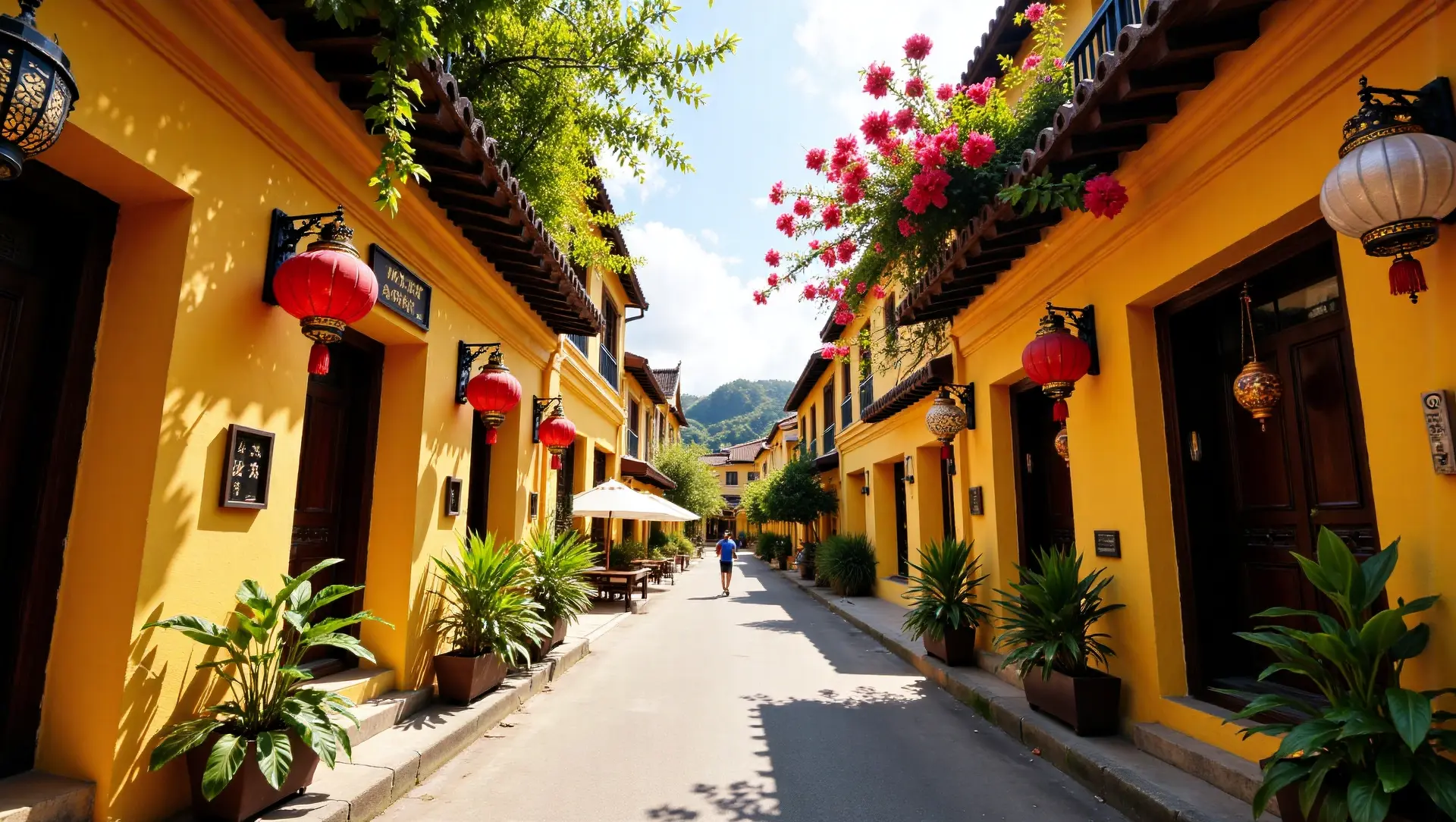
Timing is crucial when planning a trip to Vietnam due to its elongated shape and diverse climate patterns. The best time to visit Vietnam isn’t uniform across the country; it is dependent on the specific region and weather patterns you intend to explore. Understanding these variations helps ensure more pleasant travel conditions. Vietnam generally has two seasons: the dry season and the rainy season, but their timing differs significantly between the north, center, and south.
Northern Vietnam (Hanoi, Ha Long Bay, Sapa): The best time is generally during the dry season, from October to April. October to December offers pleasant temperatures and clear skies, ideal for cruising Ha Long Bay and exploring Hanoi. January to March can be cool, sometimes cold, especially in the mountains (Sapa might see frost or even snow). Spring (March-April) brings warmer weather. Summer (May to September) is hot, humid, and experiences the highest rainfall, potentially including typhoons affecting Ha Long Bay. Sapa trekking is best from March-May and September-November.
Central Vietnam (Hue, Da Nang, Hoi An): This region has a more complex pattern. Typhoons can occur from August to November, bringing heavy rain and potential flooding, particularly around Hoi An and Hue. The ideal time is often considered February to May/June when rainfall is lower and temperatures are pleasant. Summers (June-August) can be very hot and dry. Winter months (December-January) can be cool and damp. Planning around the typhoon season is advisable for coastal areas like Da Nang and Hoi An Ancient Town.
Southern Vietnam (Ho Chi Minh City, Mekong Delta, Phu Quoc): The south experiences relatively consistent warm temperatures year-round. The dry season runs from December to April, generally considered the best time to visit, with clear skies and lower humidity. The wet season is from May to November, characterized by short, heavy afternoon downpours, though travel is still very possible. The Mekong Delta, known for its river waterways and fruit production, is lush year-round but can experience flooding during peak rainy season months.
Consider your travel itinerary length, as it affects the number of destinations visitable. If visiting multiple regions, you might encounter different weather patterns simultaneously. Aim for shoulder seasons (e.g., April, May, October, November) for a potential balance across regions, though flexibility is always key. Check forecasts closer to your travel dates.
Navigating Your Journey: Vietnam Flights, Hotels, and Travel Within the Country
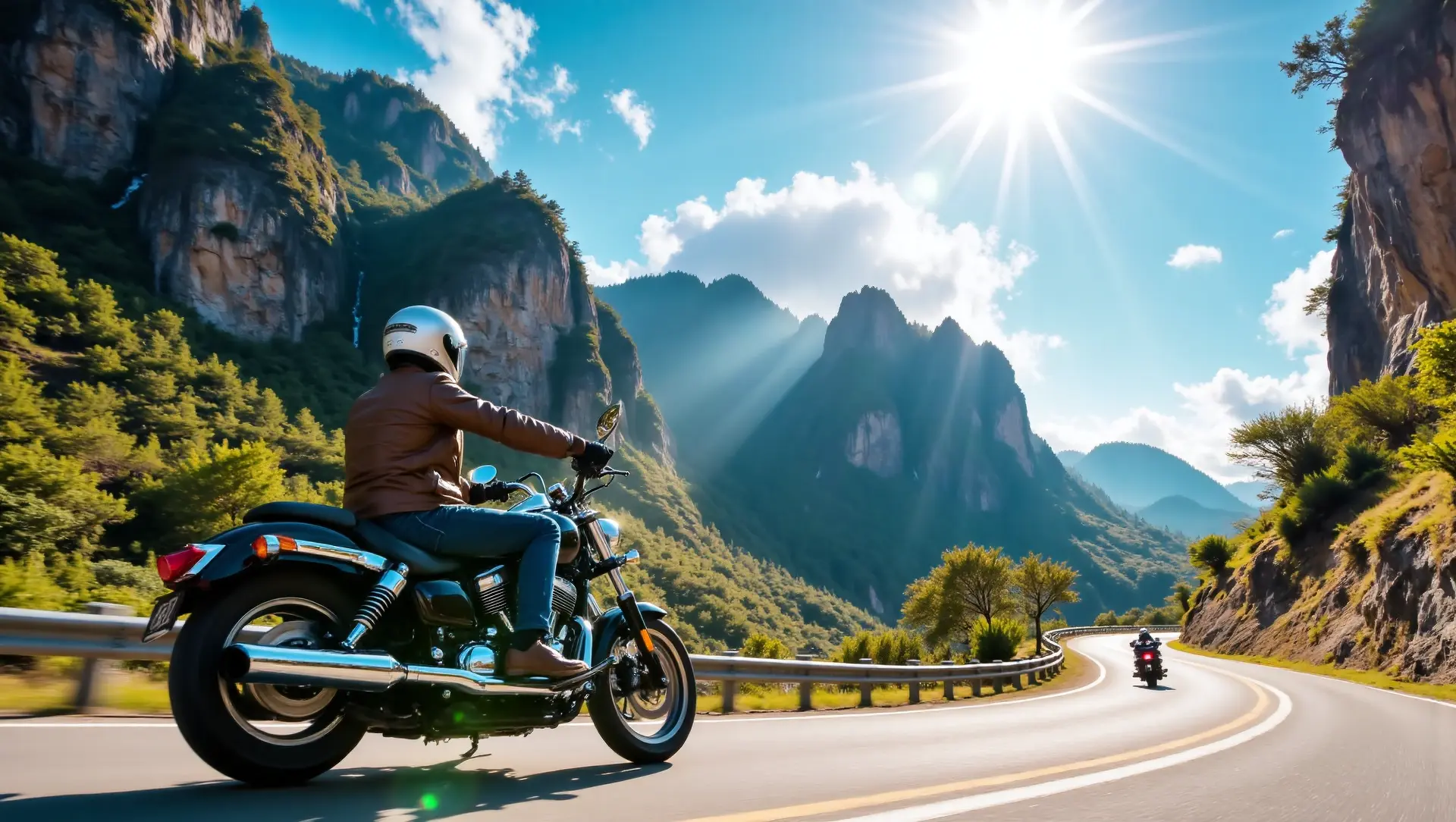
Once you’ve decided on your Vietnam destinations and the best time to visit, the next step involves practical planning: booking transportation and accommodation. Fortunately, Vietnam has well-developed infrastructure connecting major tourist spots, making travel relatively straightforward. Making these arrangements addresses the later stages of commercial investigation and prepares you for transactional intent, like booking Vietnam Flights or Vietnam Hotels.
Getting to Vietnam: Major international airports are located in Hanoi (Noi Bai International Airport – HAN), Ho Chi Minh City (Tan Son Nhat International Airport – SGN), and Da Nang (Da Nang International Airport – DAD). Numerous airlines offer connections from Asia, Europe, Australia, and North America. Searching for Vietnam Flights well in advance is recommended for better prices. Remember to check Vietnam visa requirements for your nationality; many require application beforehand, though some qualify for exemptions or e-visas.
Accommodation: Vietnam offers a vast range of accommodation options to suit every travel budget & costs. Major cities and tourist areas have everything from luxury international Vietnam Hotels and resorts to charming boutique hotels, budget-friendly guesthouses (nha nghi), and backpacker hostels. Homestays are popular in rural areas like Sapa and the Mekong Delta, offering cultural immersion. Booking platforms online provide extensive listings. Your accommodation type chosen influences your overall travel budget. Researching neighborhoods within cities (like the Hanoi Old Quarter or districts in Ho Chi Minh City) helps find suitable locations.
Travel Within Vietnam: The primary transport options for long distances are buses, trains, and domestic flights.
- Flights: Domestic Vietnam Flights are frequent, affordable, and the quickest way to cover long distances (e.g., Hanoi to Ho Chi Minh City). Airlines like Vietnam Airlines, VietJet Air, and Bamboo Airways operate extensive networks.
- Trains: The Reunification Express train line runs the length of the country from Hanoi to Ho Chi Minh City, stopping at major points like Hue and Da Nang. While slower than flying, train travel offers scenic views and different sleeper berth options for overnight journeys.
- Buses: Buses are the most common and cheapest way to travel between destinations, reaching almost everywhere. Options range from local buses to more comfortable “sleeper” buses for overnight trips. Reputable Vietnam Travel Agencies can assist with booking bus and train tickets.
- Motorbikes: Renting or buying a motorbike is popular, especially for exploring specific regions or undertaking long-distance rides. However, traffic can be chaotic, and safety is a major concern. Ensure you have the correct license and insurance. This reflects the widespread motorbike culture as a travel experience.
Local transport includes taxis (use reputable companies like Mai Linh or Vinasun or ride-hailing apps like Grab), cyclos (three-wheeled bicycle taxis, agree on price beforehand), and local buses. The Vietnamese Dong (VND) is the official currency. ATMs are widely available in cities and towns.
Ready to Book Your Trip?
Find the best deals on flights to and within Vietnam. Compare prices and save money on your adventure!
Beyond the Itinerary: Understanding Vietnamese Culture at Popular Destinations
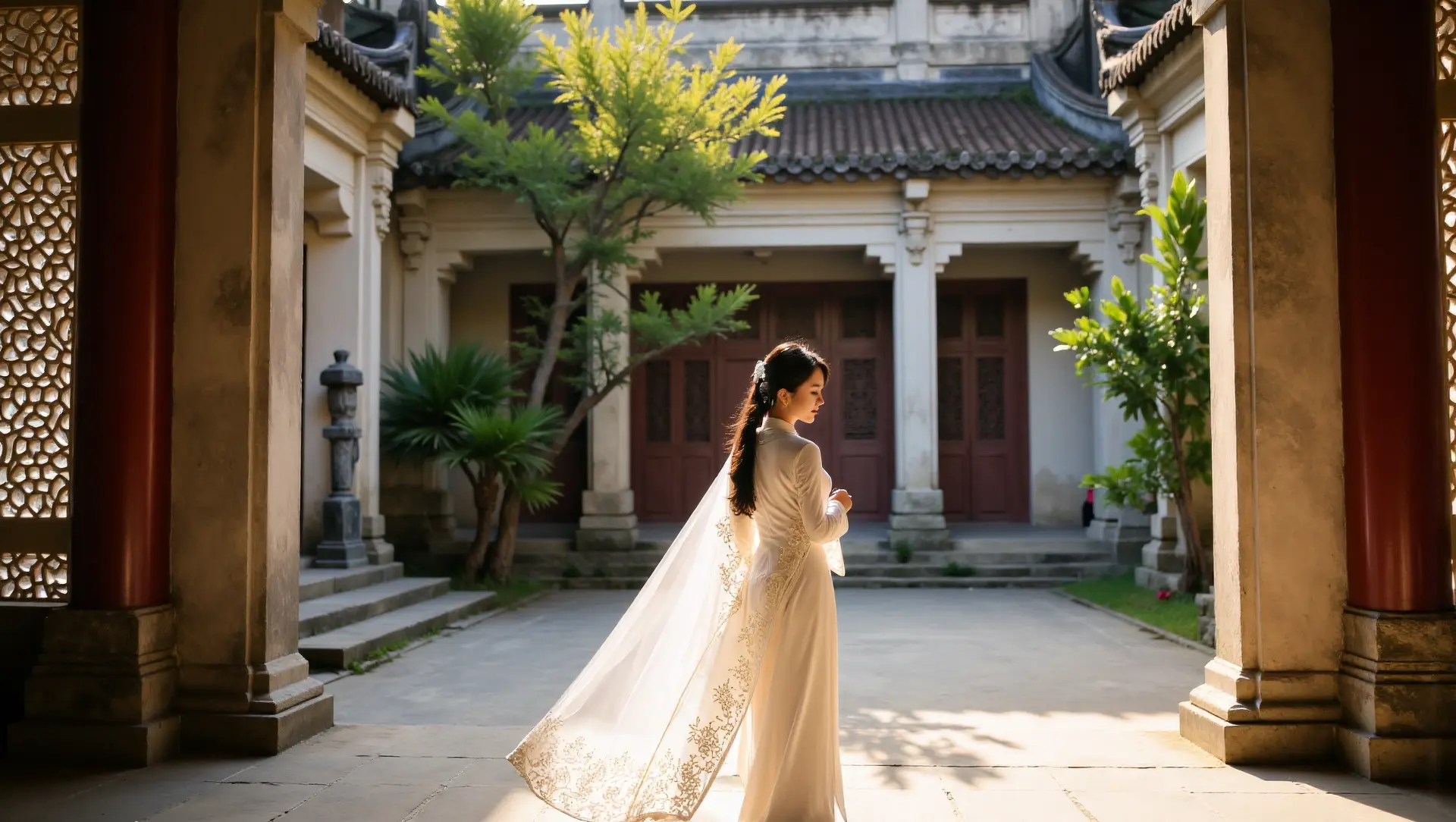
Traveling through Vietnam’s diverse destinations offers countless opportunities to engage with its rich culture. While exploring ancient temples, bustling markets, or stunning landscapes, taking time to understand Vietnamese Culture and Traditions deepens your appreciation and enhances your interactions. This goes beyond ticking off sights; it’s about connecting with the place and its people. Understanding local customs enhances the cultural immersion experience.
Respect is key. When visiting religious sites like temples or pagodas (common in places like Hanoi, Hue, and even within the Hoi An Ancient Town), dress modestly. This usually means covering shoulders and knees. Remove your shoes before entering main prayer halls or someone’s home. Observe local customs regarding greetings and interactions. A simple smile and a polite “Xin chào” (hello) or “Cảm ơn” (thank you) go a long way. While Vietnam is a generally safe country for tourists, being aware of your surroundings and respectful of local norms ensures positive experiences.
Observe the symbols of Vietnam. You might see the Vietnamese Flag (red with a yellow star) prominently displayed. The Lotus Flower is a symbol of purity and is often seen in art and architecture. The traditional dress, the elegant Ao Dai, might be worn for special occasions or by staff at hotels and restaurants. The Conical Hat (Non La) is a practical and iconic item worn by people working outdoors. Dragon motifs are prevalent in temples and imperial structures like the Hue Imperial City, symbolizing power and good fortune.
Be open to the distinct regional cultures. The north (Hanoi, Sapa) often feels more traditional and reserved compared to the more dynamic and commercially driven south (Ho Chi Minh City, Mekong Delta). Central Vietnam (Hue, Hoi An, Da Nang) has its own unique history and traditions shaped by its imperial past and coastal setting.
These distinct North, Central, and South regional cultures/cuisines are part of what makes traveling the length of the country so fascinating. Embrace the organized chaos of traffic, the importance of family, and the resilience and friendliness of the Vietnamese people. Travelers are interested in both popular landmarks and potentially unique local experiences, and understanding the culture unlocks the latter.
Read Next: Explore More About Vietnam
- › Discover More Incredible Places to Visit in Vietnam
(A deeper dive into specific locations across the country) - › Your Guide to Exploring North Vietnam
(Focus on Hanoi, Ha Long Bay, Sapa, and more)
- › Discover More Incredible Places to Visit in Vietnam
Conclusion:
Vietnam is a country of incredible diversity, offering a destination for every interest. From the breathtaking limestone karsts/islets of Ha Long Bay (a UNESCO World Heritage Site) and the historical depths of Hanoi’s Old Quarter and Hue’s Imperial City, to the bustling/energetic streets of Ho Chi Minh City and the charming lantern-lit streets of Hoi An’s Ancient Town, the choices are vast. Whether you seek adventure in Sapa’s rice terraces, relaxation on the beaches of Da Nang, or cultural immersion in the Mekong Delta’s floating markets, Vietnam delivers.
Planning involves considering the best time to visit different regions, arranging Vietnam Flights and Vietnam Hotels, and deciding on transportation. Remember the importance of Vietnamese Cuisine, cultural etiquette, and the value of exploring beyond the main Vietnam attractions. EssentialVietNamtravel.com hopes this guide provides the Vietnam travel guide information you need. We believe Vietnam offers diverse travel experiences combining natural beauty, cultural richness, and historical significance with remarkable affordability and cuisine variety. Start planning your journey to these unforgettable Vietnam destinations today. Explore the places to visit in Vietnam and create memories that will last a lifetime in this captivating corner of Southeast Asia.

